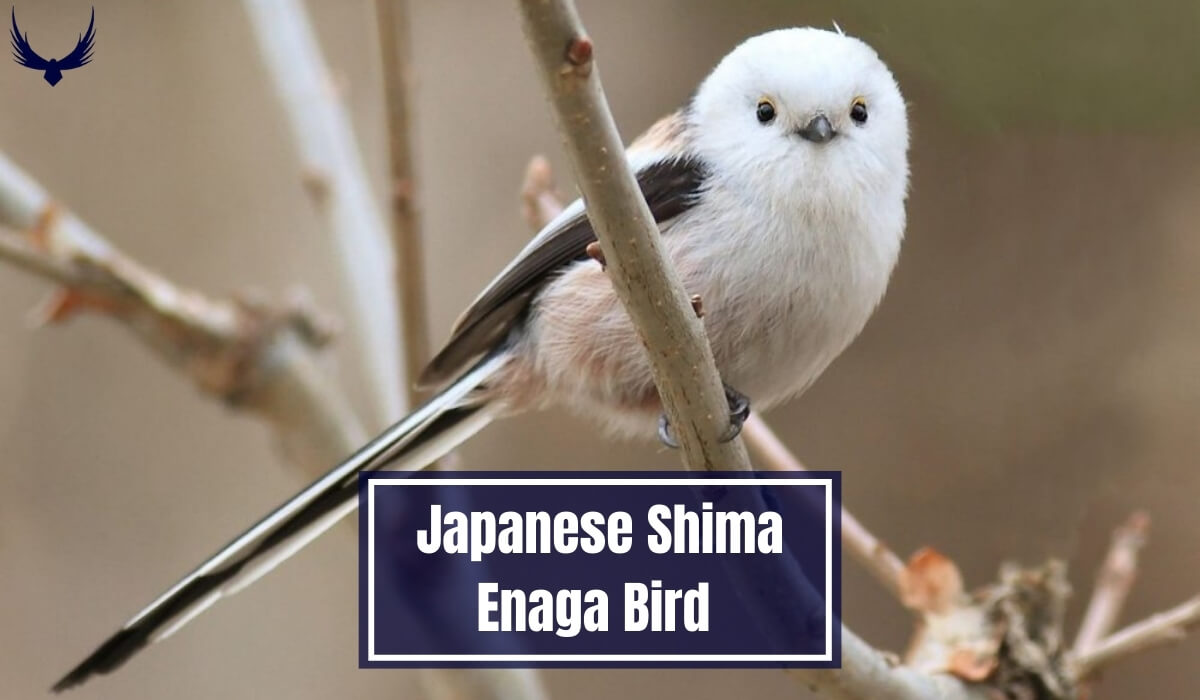Have you ever seen a bird that looks like a flying cotton ball? Meet the Fluffy Shima Enaga Bird, also known as the Japanese Snow Fairy Bird. This tiny bird is famous for its round, white body and adorable face. It lives in the snowy forests of Hokkaido, Japan, and has become a favorite thanks to its super cute appearance.
People all over the world are curious about this magical and cute looking bird. With its soft feathers and sweet look, it’s no surprise some wonder, can you own a Shima Enaga bird? It may seem like the perfect pet, but there’s a lot more to know about this rare creature.
Keep reading to find out if you can have a Japanese Snow Fairy Bird as a pet, and learn everything about the Fluffy Shima Enaga Bird including its characteristics, where it lives, how it breeds, and why it’s so loved around the world.
Shima Enaga Bird Overview
Shima Enaga, also known as the Hokkaido long-tailed tit, is a charming small bird found exclusively on the Japanese island of Hokkaido. Known for its distinctive round, white face and fluffy body, this snow fairy bird has become a beloved symbol of the region.
| Characteristic | Description |
|---|---|
| Scientific Name | Aegithalos caudatus japonicus |
| Common Name | Shima Enaga, Long-tailed Tit |
| Native Range | Hokkaido, Japan |
| Preferred Habitat | Mixed woodlands including deciduous and coniferous forests |
| Size | 13 to 15 cm |
| Weight | 7 to 9 grams |
| Plumage | Pure white face with soft, pale grey feathers |
| Diet | Insects, spiders, seeds, and berries |
| Social Behavior | Highly social and seen in flocks |
| Breeding Season | Early spring |
| Nesting | Dome-shaped nests made of moss, lichen, and spider silk |
| Eggs | 6 to 8 eggs per clutch |
| Incubation Period | 13 to 15 days |
| Conservation Status | Least Concern according to IUCN |
| Threats | Habitat loss, climate change |
| Cultural Significance | Symbol of purity and beauty in Japanese culture |
Shima Enaga are well-adapted to Hokkaido’s cold climate. These social birds are often seen in small flocks, foraging for insects in forests and visiting gardens. Their unique appearance, limited range, and cultural significance make them a favorite among bird enthusiasts and a source of pride for Hokkaido residents.
Shima Enaga Bird Physical Characteristics
Shima Enaga is a small and distinctive bird native to the island of Hokkaido in northern Japan. These charming birds are known for their round, fluffy appearance which gives them a cute and endearing look.
Japanese Shima Enaga size ranges from 13 to 15 cm in length including their long tail. Shima Enaga birds are quite small and weigh only 7 to 9 grams.
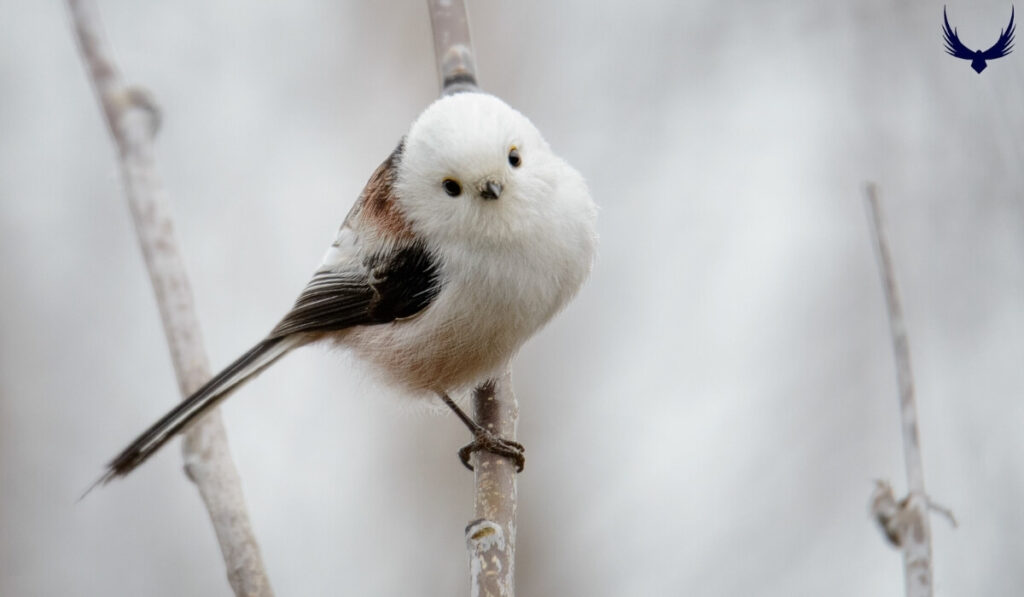
One of the most striking features of the Shima Enaga is its pure white face, which extends from its forehead to its throat. This white facial area is larger and more prominent than in other long-tailed tit subspecies, making them easily recognizable. Their body is primarily covered in soft, pale grey feathers, with hints of pink on their shoulders and sides.
The ShimaEnaga bird has a long tail which is longer than its body. Their wings are short and rounded, adapted for quick, agile movements in dense vegetation. These Japanese snow bird have small, dark eyes and a tiny, pointed black beak perfect for catching insects.
Despite their small size, their fluffy plumage makes them appear larger and helps them stay warm in Hokkaido’s cold climate. Their round body shape and soft feathers give them a distinctly plump and cuddly appearance, which has made them popular among bird enthusiasts and nature lovers.
Where Do Shima Enaga Live?
Cute Shima Enaga bird live exclusively on the island of Hokkaido in northern Japan. These small, fluffy birds are a subspecies of the more common long-tailed tit found across Eurasia.
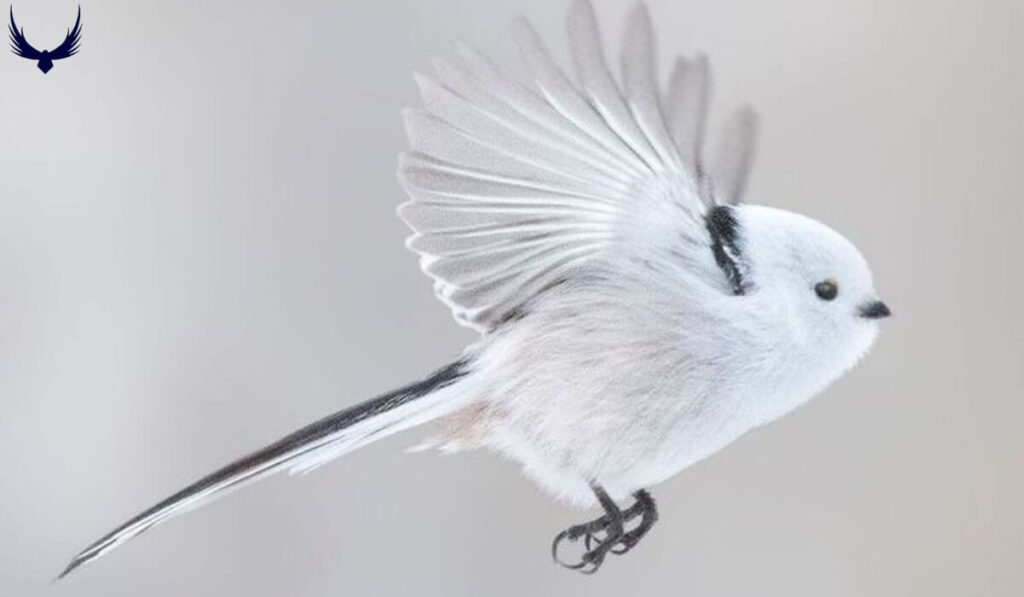
Fluffy Shima Enaga birds prefer forested areas such as mixed woodlands with a variety of trees and shrubs. Shima birds are well-adapted to Hokkaido’s cold climate, with their distinctive round, white faces and plump bodies helping them stay warm during harsh winters.
These Japanese snow fairy bird are social birds and often seen in small flocks moving through the trees in search of insects and spiders to eat.
What Do Shima Enaga Eat?
Shima Enaga bird have a varied diet that changes with the seasons. Shima Enaga feeds on insects and spiders during spring and summer. They are expert foragers, hopping from branch to branch in search of small bugs.
Shima Enaga diet includes caterpillars, aphids, beetles, and various other tiny insects they can find among the leaves and bark of trees. These protein-rich foods are important during breeding season when they need extra energy to raise their chicks.
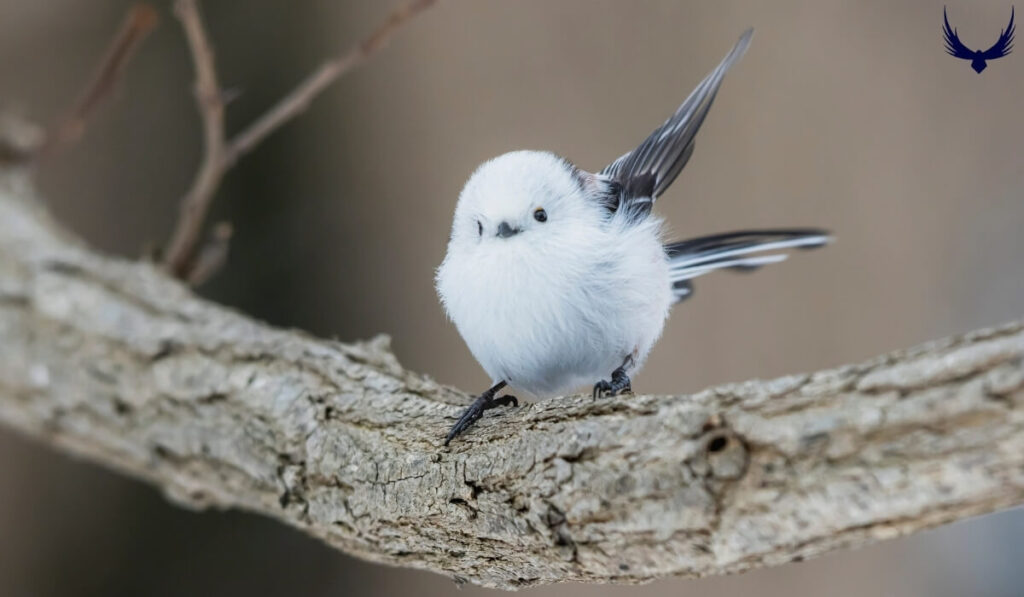
In Autumn and Winter, when insects become scarce, Shima Enaga adapt their diet. They start eating more plant-based foods such as seeds and berries. They may visit bird feeders in gardens, enjoying sunflower seeds and other small seeds.
Some of their favorite winter foods include the seeds of birch and alder trees. They also eat tree buds and drink tree sap when available.
Foraging Behavior
Japanese Shima Enaga birds have a unique foraging style. They hang upside down on branches to reach insects or seeds in hard-to-reach places. They forage in small flocks, which helps them find food and stay safe from predators.
Shima Enaga needs to eat frequently throughout the day due to their high metabolism during cold Hokkaido winters. These Japanese snow birds have varied diet and adaptable feeding habits that are crucial for their survival in their island habitat year-round.
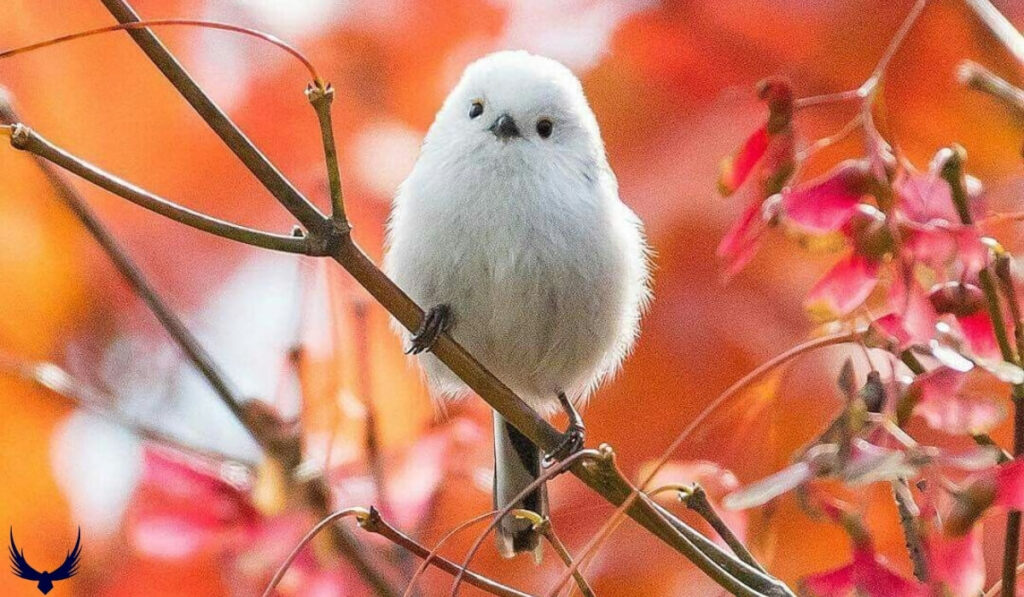
Water is also an important part of their diet. ShimaEnaga birds drink from puddles, streams, and dewdrops on leaves. In winter, they may eat snow to stay hydrated when liquid water is frozen.
Shima Enaga Bird Breeding Pattern
Mating Season
Shima enaga breeding occurs in the spring on the island of Hokkaido, Japan. Breeding season starts in April and can extend into early summer. As the weather warms up and food becomes more plentiful, these small birds begin their mating rituals.
Shima Enaga birds are monogamous. The male courts the female with a series of soft, trilling calls and by bringing her food. Once a pair has formed, they work together to build their nest.
Nesting
Shima Enaga built their nests in the fork of tree branches in deciduous or mixed forests. They prefer locations that offer some protection from predators.
Their nests are intricate, dome-shaped structures with a small entrance hole near the top. These hokkaido birds use a combination of moss, lichen, spider webs, and feathers to create these cozy homes.
Breeding
Once the nest is ready, the female lays a clutch of 6 to 8 small, white eggs with reddish spots. Both parents take turns incubating the eggs for about 13 to 15 days until they hatch.
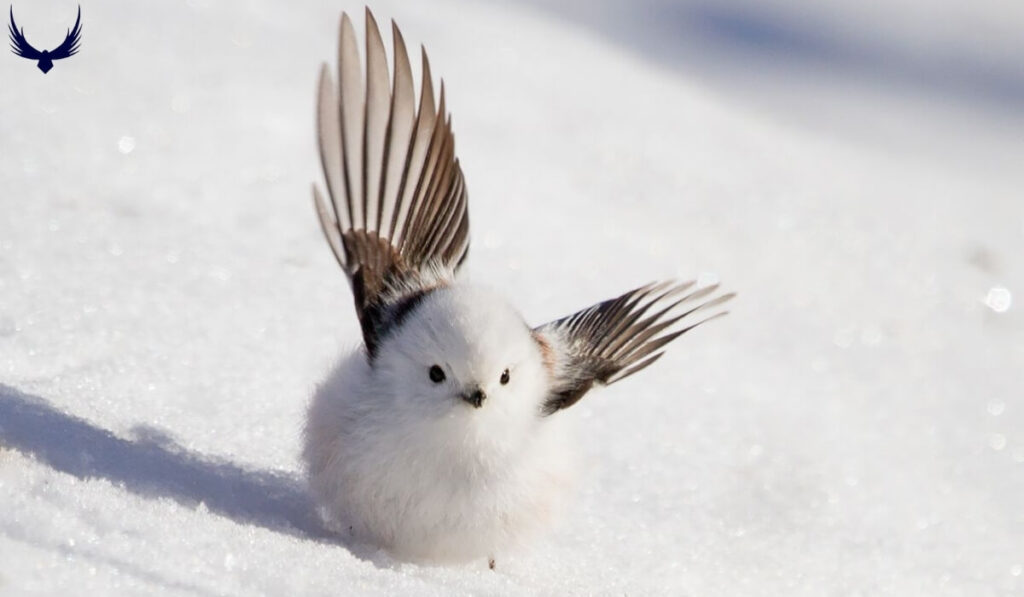
After hatching, both parents raise Shima Enaga bird baby The Shima Enaga baby chicks grow quickly and are ready to leave the nest after about 15 to 18 days.
The entire breeding process, from nest-building to fledging, takes about 6 to 8 weeks. Shimaenaga birds raise only one brood per year due to the short summer season in Hokkaido.
Interesting Shima Enaga Facts! Shima Enaga often engages in cooperative breeding. This means that young birds from previous broods may stick around to help their parents raise the new chicks. This behavior increases the survival chances of the young birds in the harsh Hokkaido environment.
Shima Enaga Conservation Status & Threats
Conservation Status
Shima Enaga birds face several challenges in terms of conservation. Currently, they are not listed as endangered or threatened on global conservation lists. Shima Enaga is classified as a species of Least Concern by the International Union for Conservation of Nature (IUCN). But their limited range makes them vulnerable to environmental changes.
Major Threats
One of the main threats to Shima Enaga is habitat loss. As Hokkaido continues to develop, the forests these birds rely on for nesting and foraging are shrinking. Urbanization and agriculture expansion can fragment Shima Enaga habitat, making it harder for them to find suitable nesting sites and food sources.
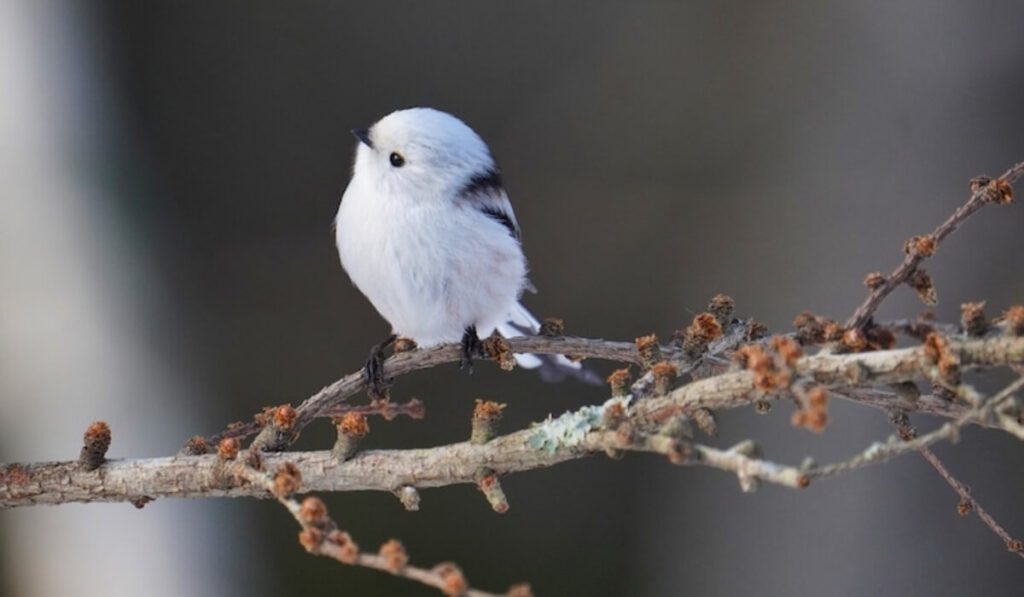
Climate change is another significant concern for these Japanese snow fairy birds. As Hokkaido’s climate warms, it could affect the availability of insects that Shima Enaga depends on for food during breeding season.
Predation from species like feral cats can pose a threat to these small birds. Their nests built in accessible locations can be vulnerable to various predators including eagles.
Shima Enaga Cultural Significance
Symbolism
Shima Enaga has become a beloved symbol of Hokkaido. Their round, white faces and fluffy appearance are seen as the purity and beauty of Hokkaido’s snowy landscapes.
These Hokkaido birds represent resilience and adaptability, thriving in the harsh northern climate. They’re often featured in local art, merchandise, and tourism materials as a charming mascot for the region.
Cultural Impact
Japanese Shima-Enaga bird has inspired various aspects of local culture. They appear in children’s stories, local festivals, and educational programs about Hokkaido’s wildlife.
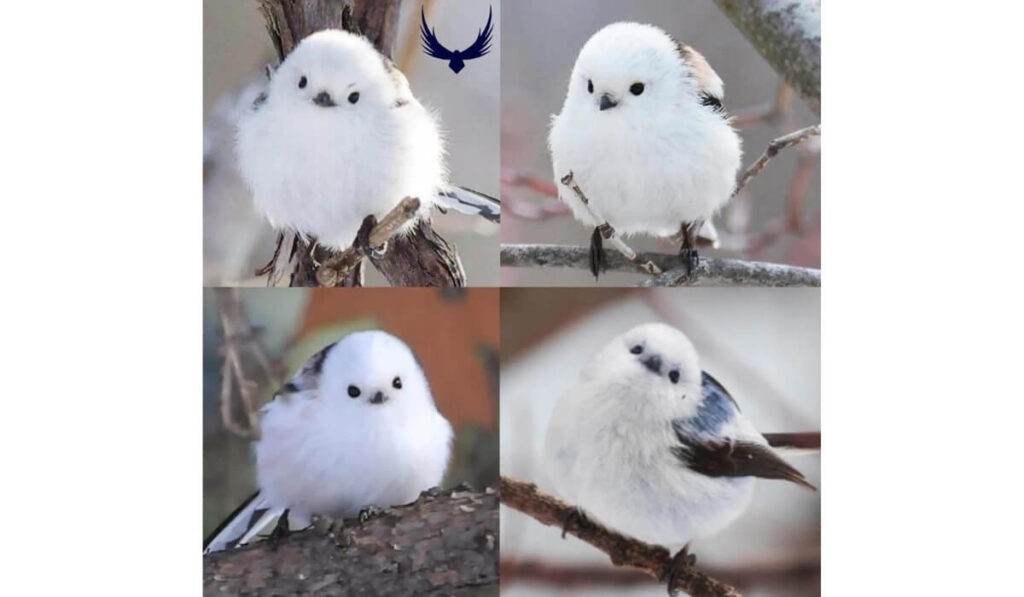
The snow fairy fluffy Shima Enaga birds’ social nature and family-oriented behavior also resonate with Japanese cultural values.
Popularity Among Bird Lovers
Bird enthusiasts and nature lovers from around the world visit Hokkaido to see Shima-Enaga birds. Their unique appearance and limited range make them a prized sight for birdwatchers. Many nature tours and wildlife photography trips in Hokkaido feature these birds as a highlight, boosting local eco-tourism.
Can You Own a Shima Enaga Bird?
Despite its popularity, the Shima Enaga cannot be owned or kept as a pet. Strict Japanese laws protect these birds to preserve their natural habitat and prevent harm. Buying, selling, or importing Shima Enaga birds is illegal not only in Japan but also in many other countries.
The best way to appreciate the beauty of the Shima Enaga is by observing them in the wild or enjoying photos and videos shared by bird watchers.
FAQs – Fluffy Shima Enaga Bird
Where to See Shima Enaga Bird?
Shima enaga can be seen throughout Hokkaido, Japan’s northernmost main island. The best places to spot these charming birds are in the island’s forested areas in mixed woodlands. Popular locations for sightings include Hokkaido’s national parks, such as Daisetsuzan National Park and Shikotsu-Toya National Park.
Are Shima Enaga Birds Endangered?
Shima Enaga Japanese snow fairy bird are not currently considered endangered. These small, fluffy birds with distinctive long tails are common in parts of Japan.
What Makes Shima Enaga Birds Unique?
Shima Enaga birds are unique for their adorable, fluffy appearance and extremely long tails, which can be up to 8 cm in length – longer than their bodies.
Can Shima Enaga Birds be Kept as Pets?
Shima Enaga birds are not kept as pets. In Japan, these wild birds are protected by law, making it illegal to capture or keep them. They are best appreciated in their natural habitat, where they can live freely and contribute to the ecosystem instead of keeping a Shima Enaga bird pet.
How Much is Shima Enaga Bird Price?
The Shima Enaga bird pet price doesn’t exist, as these adorable birds are not sold as pets. Native to Japan, Shima Enagas are wild and legally protected, so buying or selling them is illegal.
Can You Own a Shima Enaga Bird in USA?
No, you cannot own a Shima Enaga bird in the USA. These birds are wild and protected in Japan, and importing or keeping them as pets is illegal.
Can You Buy a Shima Enaga Bird?
You cannot buy a Shima Enaga bird because they are protected wild birds native to Japan. Selling, buying, or keeping them as pets is illegal worldwide.

